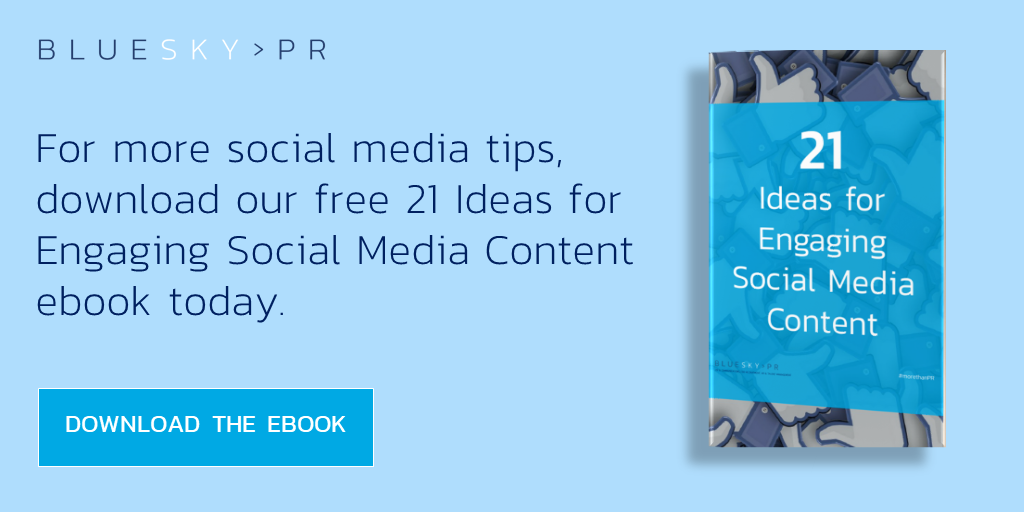Have you ever wondered how the Instagram algorithm works and how you can get your recruitment firm’s content in front of more users?
You’re in luck. Instagram CEO Adam Mosseri has shared insights into how content is ranked across the app, including the main Feed, Reels and Explore.
As explained by Mosseri, "We want to do a better job of explaining how Instagram works. There are a lot of misconceptions out there, and we recognize that we can do more to help people understand what we do. Today, we’re sharing the first in a series of posts that will shed more light on how Instagram’s technology works and how it impacts the experiences that people have across the app."
Here’s a roundup of the key points that he discussed in the blog.
There is no single algorithm that controls all content
One of the misconceptions that Instagram wants to clear up is that there is not one all-encompassing algorithm that oversees the content that users see on the platform - with each section of the app instead having its own separate algorithm which influences what appears.
How the Feed and Stories algorithms work
There are thousands of signals that its systems use to influence the order of content that users see. However, there are four key signals for the Feed and Stories. These are:
- Information about the post - These are signals both about how popular a post is and information such as when it was posted, how long it is if it’s a video, and what location, if any, was attached to it.
- Information about the person who posted - This enables the algorithm to understand how interesting the account might be to the user, and includes signals like how many times people have interacted with that person in the past few weeks.
- The user’s activity - This helps it understand what the user might be interested in and includes signals such as how many posts they’ve liked.
- The user’s history of interacting with someone - This gives the algorithm a sense of how interested the user is in seeing posts from a particular account, such as whether or not they comment on each other’s posts.
Using these, the algorithms will predict how likely a user is to interact with a post and the higher the likelihood, the higher the post will rank.
For feed posts, Instagram looks at how likely a user is to:
- Spend a few seconds on a post
- Comment on a post
- Like a post
- Save a post
- Tap on the profile photo associated with the post
How the Explore algorithm works
Instagram’s Explore feed works differently as it shows users content from accounts that they do not already follow. This is focused on showing users content that they may like, based on who they follow and their engagement history.
Mosseri explains how these signals are used to find relevant content from accounts that a user isn’t following:
“Let’s say you’ve recently liked a number of photos from San Francisco’s dumpling chef Cathay Bi (@dumplingclubsf). We then look at who else likes Cathay’s photos, and then what other accounts those people are interested in. Maybe people who like Cathay are also into the SF dim sum spot @dragonbeaux. In that case, the next time you open Explore, we might show you a photo or video from @dragonbeaux. In practice, this means that if you’re interested in dumplings you might see posts about related topics, like gyoza and dim sum, without us necessarily understanding what each post is about.”
After identifying relevant content to showcase to users it will then rank these posts in the Explore feed based on how likely a user is likely to do something with the post. The most important actions that Instagram uses to inform these prediction include likes, saves and shares.
The key signals for Explore are:
- Information about the post - This looks at how popular a post seems to be. Signals used to inform this include how many and how quickly other people are liking, commenting, sharing, and saving a post. These signals matter much more in Explore than they do in the Feed or in Stories.
- The user’s history of interacting with the account that posted - It is likely that the post was shared by an account that the user hasn’t come across before, but if they have interacted with them in the past it gives the algorithm a sense of how interested the user might be in what they shared.
- The user’s activity - These include signals such as what posts they have liked, saved or commented on and how they’ve interacted with posts in Explore in the past.
- Information about the account that posted – These signals include how many times users have interacted with that account in the past few weeks, to help find compelling content from a wide range of accounts.
How the Reels algorithm works
The Reels algorithm is "specifically focused on what might entertain you." The four key elements for its algorithm are:
- The user’s activity – It looks at things such as which reels the user has liked, commented on, and engaged with recently. These signals help the algorithm to understand what content might be relevant to the user.
- The user’s history of interacting with the account that posted – As with Explore, it’s likely the video was made by an account that the user has never heard of, but if they have interacted with them in the past it informs the algorithm as to how interested the user might be in what they shared.
- Information about the reel - These are signals about the content within the video such as the audio track, the pixels and frames used, as well as popularity.
- Information about the account that posted – The Reels algorithm factors in popularity to help find entertaining content from a wide range of accounts.
What the Instagram algorithm means for recruitment marketers
It is vital that marketers understand the signals underpinning each of the algorithms that influence what content users see across Instagram’s platform. This will enable you to maximise the visibility and engagement of your firm’s posts on a consistent basis.

 Author: Dan Stobbs
Author: Dan Stobbs

Originally posted July 2018, updated June 2021
Post Your Comment